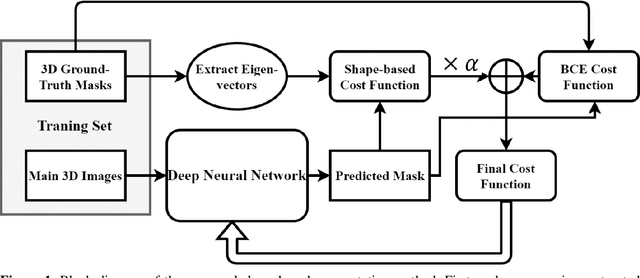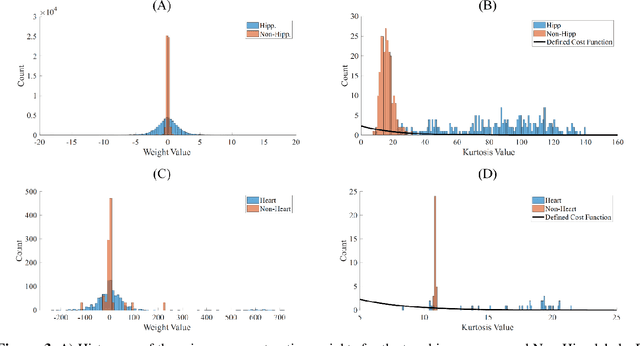Reza Karimzadeh
A novel shape-based loss function for machine learning-based seminal organ segmentation in medical imaging
Mar 07, 2022



Abstract:Automated medical image segmentation is an essential task to aid/speed up diagnosis and treatment procedures in clinical practices. Deep convolutional neural networks have exhibited promising performance in accurate and automatic seminal segmentation. For segmentation tasks, these methods normally rely on minimizing a cost/loss function that is designed to maximize the overlap between the estimated target and the ground-truth mask delineated by the experts. A simple loss function based on the degrees of overlap (i.e., Dice metric) would not take into account the underlying shape and morphology of the target subject, as well as its realistic/natural variations; therefore, suboptimal segmentation results would be observed in the form of islands of voxels, holes, and unrealistic shapes or deformations. In this light, many studies have been conducted to refine/post-process the segmentation outcome and consider an initial guess as prior knowledge to avoid outliers and/or unrealistic estimations. In this study, a novel shape-based cost function is proposed which encourages/constrains the network to learn/capture the underlying shape features in order to generate a valid/realistic estimation of the target structure. To this end, the Principal Component Analysis (PCA) was performed on a vectorized training dataset to extract eigenvalues and eigenvectors of the target subjects. The key idea was to use the reconstruction weights to discriminate valid outcomes from outliers/erroneous estimations.
 Add to Chrome
Add to Chrome Add to Firefox
Add to Firefox Add to Edge
Add to Edge